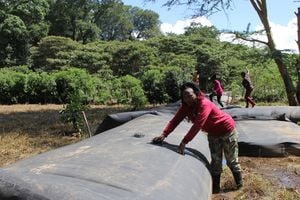
What is the essential toolkit every car should carry when venturing off the beaten track?
| ShutterstockDN2
Premium
Must-have tools in your car when driving off the beaten track
What is the essential toolkit every car should carry when venturing off the beaten track?
The absolute bare essentials are, of course, a jack and a wheel brace. Off the beaten track there often will not be firm and flat ground, so it is advisable to carry a stout piece of plank to give the jack a more stable base (at least a 6x2, about 30 ms long). Add it to your first aid kit, fire extinguisher and warning triangles. A set of jump leads, some sort of tow rope and a 5-litre can of clean water could also be useful.
The most basic tools would be a star screwdriver, a flat screwdriver and a pair of pliers (long-nose or snub nose, with a wire-cutter in the jaws). A “Leatherman” style pocket tool has all of those (and a saw, and a knife, and a file, and a pair of scissors etc.) if you want to save weight and space.
The most commonly used spanners are numbers 10, 11, 12, 13, 14, 15 and 17. Combination spanners in those sizes, with one ring end and one open end, are the most versatile.
An adjustable spanner will cover all the bigger sizes. So-called “mole grip” pliers with an adjustable locking jaw will give you a grip on just about anything from cylindrical shapes to tiny nuts and also act as a substitute vice. All of that, and a few other bits and pieces (a short length of hack-saw blade, a mini torch…) can be fitted in a “grab kit” pouch the size of a laptop and weighing about two kilos (tucked under the driver’s seat, wrapped in a wiping rag?). With that, there is not much an experienced mechanic (perhaps you, perhaps someone else) won’t be able to try to fix.
The list of recommended additionals grows as a safari becomes more expeditionary, more remote or more extended in time. A bigger toolbox might include consumables like a roll of insulating tape, duct tape, epoxy adhesive, silicone rubber, spare engine oil, ATF and brake fluid, WD40, a small roll of binding wire, a length of electrical wire, a couple of cans of tyre-fix foam, some spare bulbs and fuses…)
Spares are a more vexing issue, because there are too many maybes to cover all the bases. What you can try to cover are items that are most likely to fail (for example, a fanbelt), which cannot be fudge-fixed and will immobilise the vehicle.
A puncture repair kit, probably tubeless, and an air pump, ideally electric. A spare inner tube (even for tubeless tyres) in case of a gash that tubeless plugs can’t seal, and/or as a source of rubber strips for strapping or mending all sorts of things.





